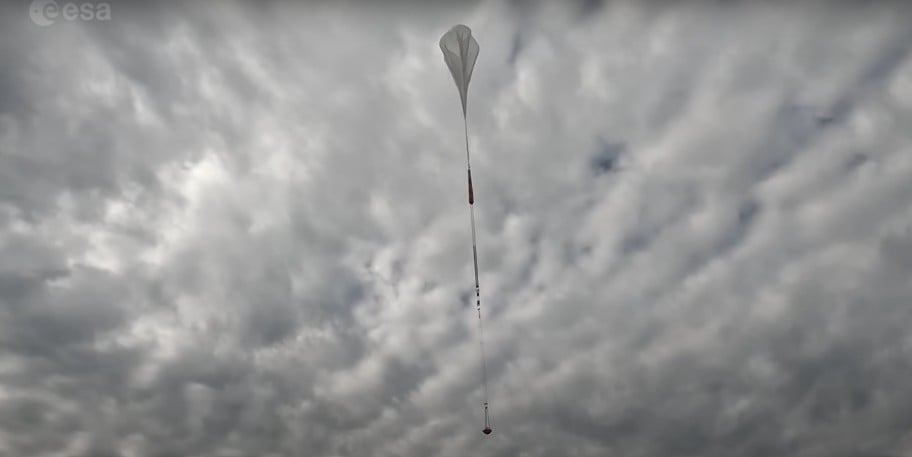Recreating the environment that most spacecraft experience on their missions is difficult on Earth. Many times it involves large vacuum chambers or wind tunnels that are specially designed for certain kinds of tests. But sometimes, engineers get to just do larger scale versions of the things they got to do in high school. That is the case for a recent test of ExoMars’s parachute system. A team of ESA engineers and their contractors performed a scaled up egg-drop test common in physics classes across the world. Except this one involved a stratospheric balloon the size of a football field and a helicopter.
ExoMars has a multi-stage descent system. First, the spacecraft itself will aerobrake through Mars’ atmosphere. Then it will deploy a parachute to slow down even more using just the planet’s atmosphere. A final stage will see the spacecraft deploy retrorockets to perform a soft landing on the surface of the Red Planet.
Each of those sub-systems must be tested in turn, with each requiring different test setups. Recently the mission’s engineers completed testing of the parachute that involved dropping it from the stratosphere to an isolated part of northern Sweden. To get it to the stratosphere, the entire test rig, which represented the heat shield and mock internal components to be used on ExoMars itself, was attached to a giant balloon that, when inflated to its full size, was about the size of a football field.
Video describing the full stratospheric deployment test. Credit – ESA YouTube Channel
After it made it to the stratosphere, the craft was released and immediately deployed its parachute. That high in the atmosphere, the conditions are similar to Mars’ extremely thin atmosphere, and after falling for a certain amount of time, the spacecraft would be going about the same speed it is expected to after the aerobraking stage of its descent. In other words, this test was designed under conditions expected to be found when ExoMars actually gets to Mars.
Sensors onboard the spacecraft captured as much data as possible – orientation, rotation, speed, and even a video camera were all operational on the way down. Once it did land in the northern part of Sweden, a few lunch team members got to take a ride in a helicopter to go find it – which is the dream of most future engineers doing the egg drop test in their physics class in school.
The parachute itself had sat in storage for years before being deployed in this test, so part of the reason for the test itself was to ensure the parachute didn’t degrade over time, even though it was stored in a controlled environment. Despite no publicly released records on whether or nor the test was successful, from a video describing the process and capturing some of the important moments, it certainly seems like it was. At least the parachute itself seemed to deploy and remain intact, and the test vehicle didn’t end up as a smoldering hole in the ground at the end of the test. Most of those high school engineers would count that as a success.
ESA video that describes the process of how ExoMars will get to the surface of the Red Planet. Credit – ESA YouTube Channel
ExoMars itself is planned for launch in October 2028, during one of the bi-yearly openings for Mars launches. So the engineers have about three more years to complete the construction and testing of the rest of their systems. Given the geopolitical tensions surrounding this project, the fact that it is moving foward at all is a small bureacatic miracle. But with this test chalked up as a success, the team can more on to more interesting ones – like potentially blasting the heat shield with a flamethrower or having the spacecraft itself fire its own rockets and land securely on the ground. When it comes to spaceflight, sometimes testing is the most fun part of the engineering process.
Learn More:
UT – ExoMars is Back on Track for Mars in 2028
UT – The ExoMars Rover is Ready, now it Just Needs a new Ride to Mars
UT – ExoMars is Suspended. ESA is Looking for new Solutions to Replace Russian Components
